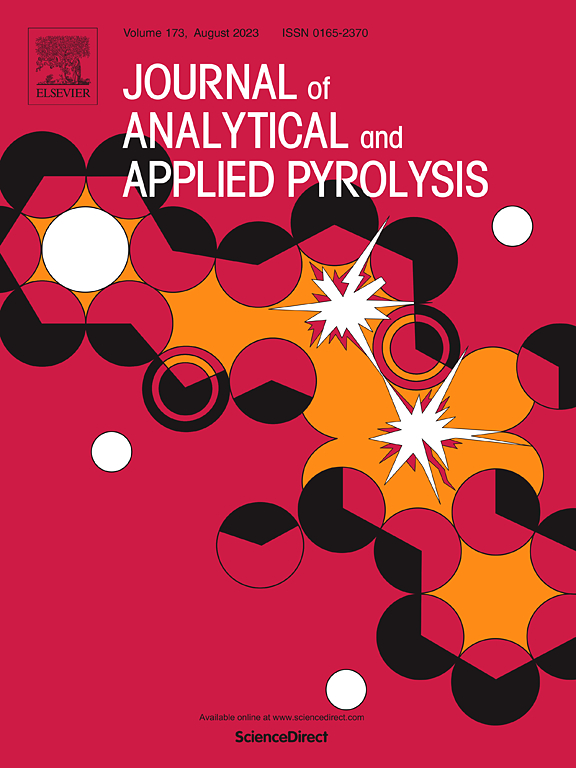Catalytic co-pyrolysis of Chlorella vulgaris and urea: Thermal behaviors, product characteristics, and reaction pathways
Abstract
The catalytic pyrolysis behavior of Chlorella vulgaris (CV) with urea (UR), and its product distribution were investigated using TG-FTIR and Py-GC/MS. The mechanism of formation of nitrogen- and oxygen- containing compounds (NOCCs) were determined using density functional theory (DFT). The thermogravimetric results demonstrated that the introduction of UR reduced the temperature (342 ℃) of the mass loss peak of CV, and the pyrolysis activation energies of the mixtures were lower than that of CV pyrolysis (208 kJ/mol). The FTIR results indicated that the pyrolysis of UR with CV promoted the formation of oxygen-containing functional groups, while the addition of HZSM-5 enhanced the deoxygenation reaction and suppressed the release of NH3. In terms of fast pyrolysis products, the pyrolysis of CV with UR decreased the content of long-chain nitriles in nitrogen-containing compounds (NCCs) and esters in oxygen-containing compounds (OCCs). Meanwhile, the reaction between amino acids and urea decomposed derivatives was promoted to generate NOCCs such as imidazolidinediones and morpholines. The addition of catalyst was relatively more conducive to the formation of nitriles (4.89–8.64%). The possible reaction pathways of the formation of NOCCs were proposed using the intermediate products generated by CV and UR pyrolysis. The energy barriers (ΔG*) of the reaction pathways were calculated by DFT, and the rationality of each possible pathway was verified. This study confirmed the synergistic effect during the pyrolysis of CV with UR, and elucidated the partial transformation mechanism of N and O during the pyrolysis reaction. This can provide the necessary theoretical guidance for the preparation of high-value nitrogenous chemicals.

 求助内容:
求助内容: 应助结果提醒方式:
应助结果提醒方式:


